Magic tricks? Street shots of Turkish magic sand make coffee, while Taipei has ancient charcoal and Turkish coffee.
Professional coffee knowledge exchange more coffee bean information please follow the coffee workshop (Wechat official account cafe_style)
Turkish coffee, also known as Arabica coffee, is the ancestor of European coffee, which has a history of 700 to 800 years. When it comes to coffee, it is necessary to mention Turkish coffee because whether from the perspective of Islam or Christianity, the origin of coffee is in the remote and mysterious Middle East.
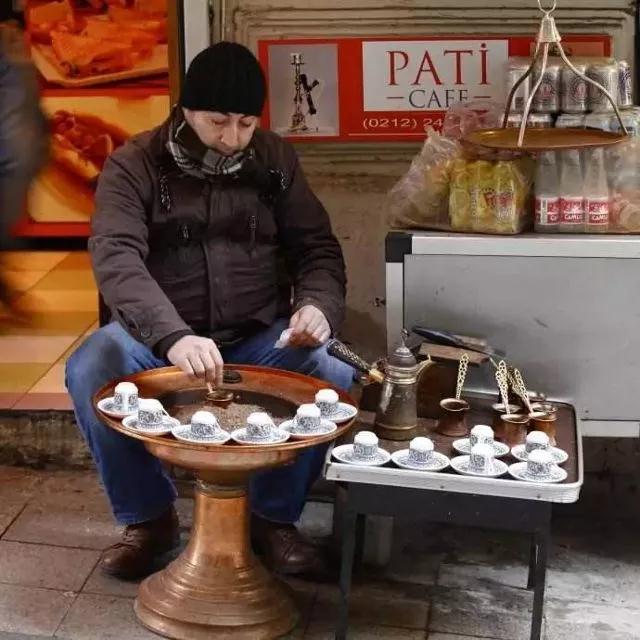
Coffee was born in Turkey in the 16th century, began to be commercialized, and quickly spread to continental Europe. Turkish coffee is still popular in Greece, Eastern Europe, the Middle East, North Africa and other places, and still maintains the mystery of early religious rituals.
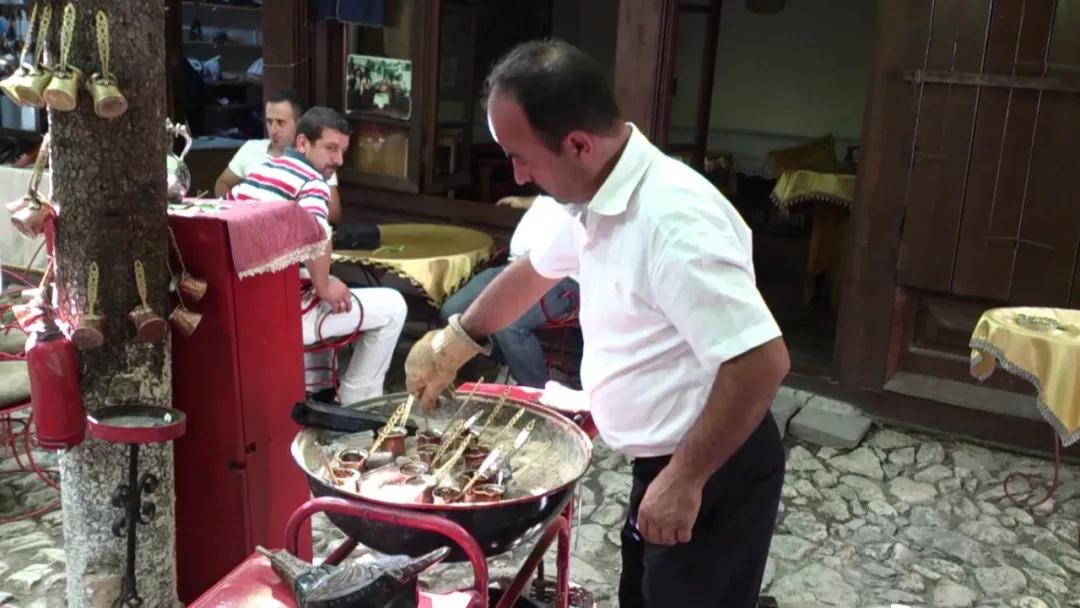
It is said that in Turkey, it is extremely noble to make a cup of traditional Turkish coffee for guests, and some even bathe and fast in advance.
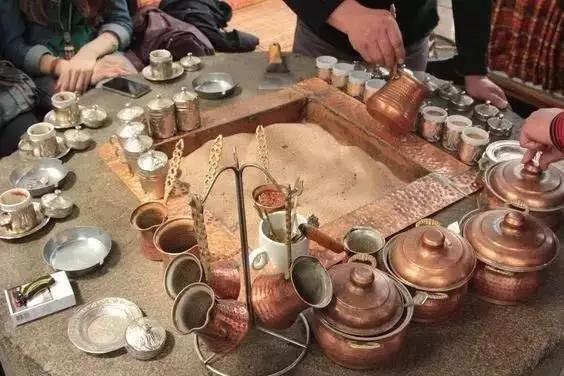
Turkish coffee is not common, and its taste is mainly divided into Skaito (bitter), Metrio (sweet) and Gligi (sweet), these three flavors, and sugar is added when the coffee is cooked.
Turkish coffee must be cooked in a small copper pot that specializes in Turkish coffee, which locals call Cevze. This small copper pot usually makes only two cups of coffee.
One hundred milliliters of pure water and ten grams of coffee powder are heated over low heat and stirred slowly in one direction. when the coffee begins to boil, a layer of coffee foam floats on the surface of the liquid, gently separate the coffee foam with a small spoon and divide it into each cup. Then continue to make coffee until it foams again.
Near the business circle of the Yongle market in Taipei, we occasionally come across some special coffee shops, the "Liangguang Coffee" at 229 Nanjing West Road, the Turkish copper pot charcoal roast coffee shop, slowly savoring the aroma of the coffee.
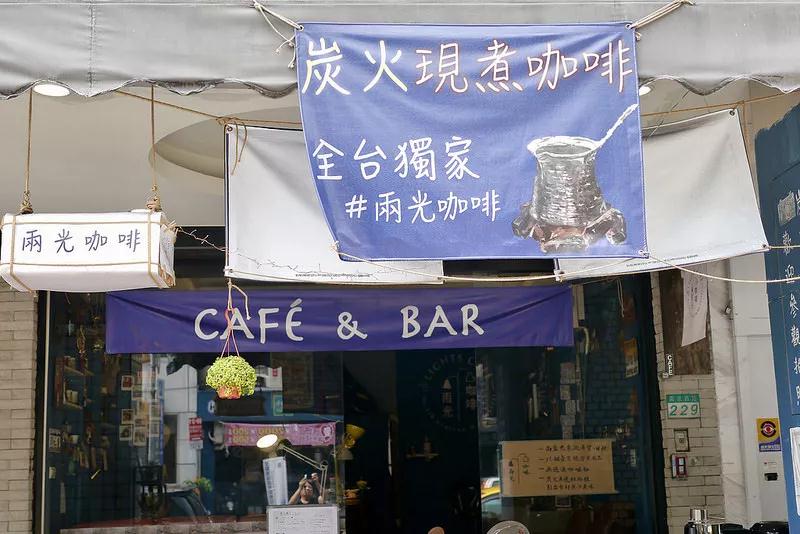
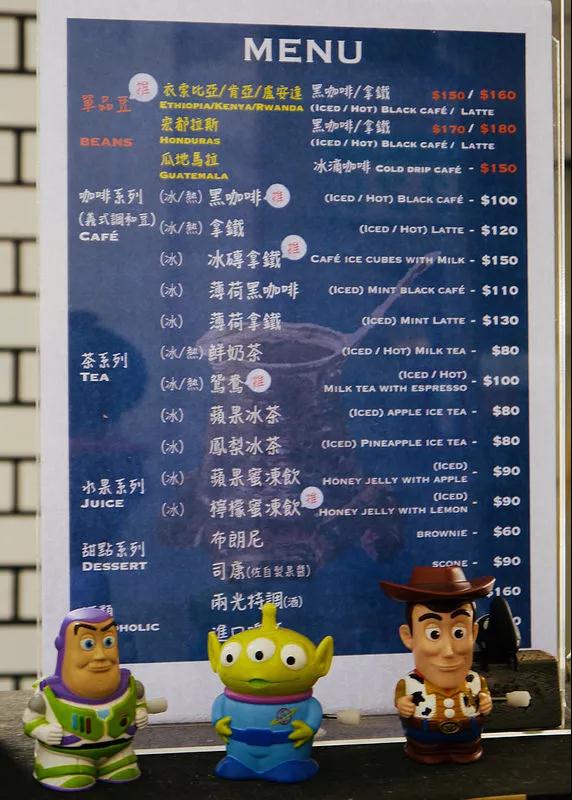
Turkish coffee is selected as a cultural heritage of the United Nations.
It is also known as the ancestor of European coffee.
In the way of cooking coffee with carbon, Yuguang uses carbon essence.
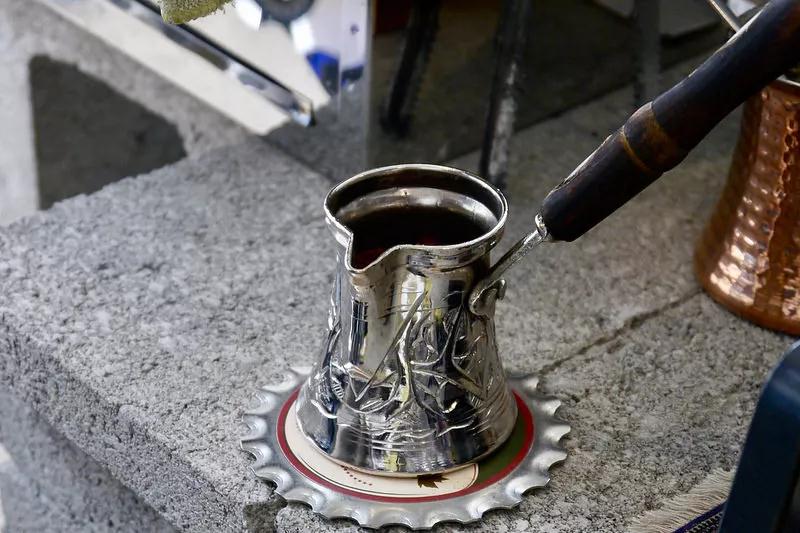
Carbon essence has the characteristics of far infrared.
The heating process can lead to the original taste of coffee.
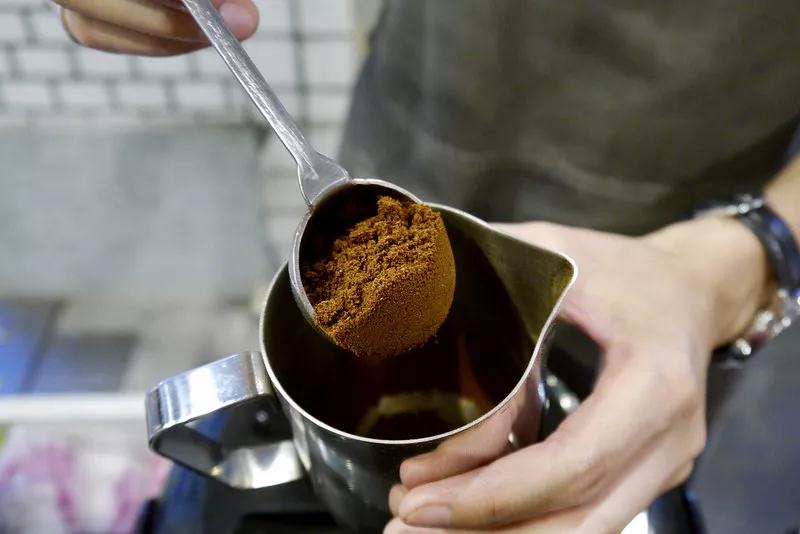
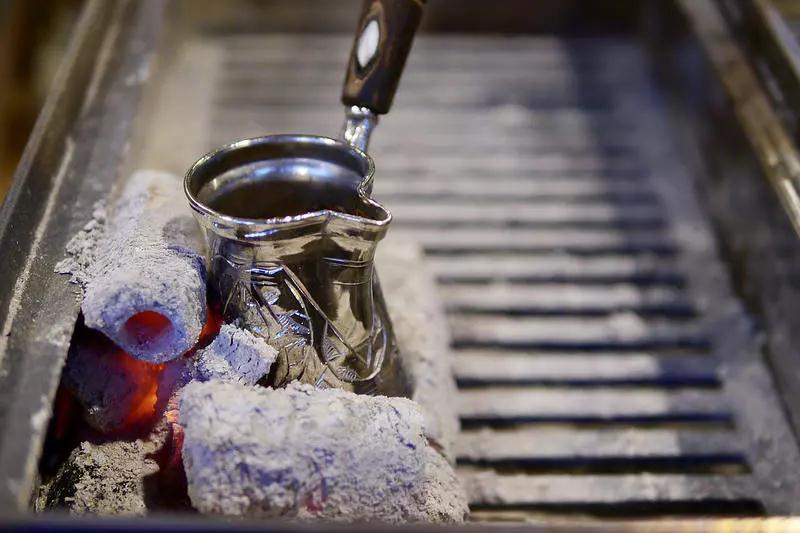
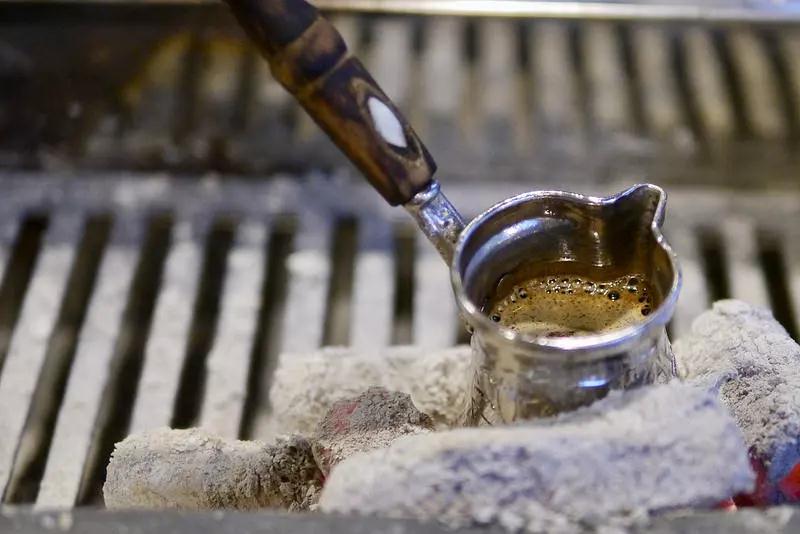
No wonder I like those who believe in primitive taste.
I didn't expect Turkish charcoal to cook coffee.
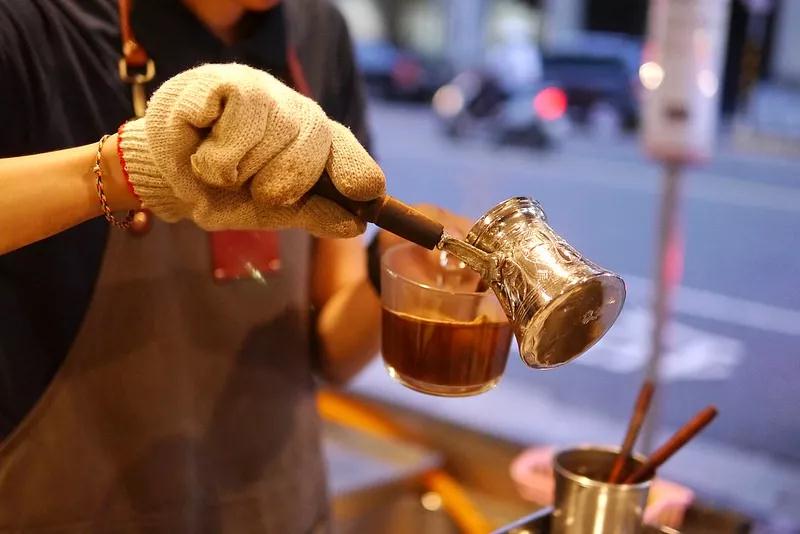
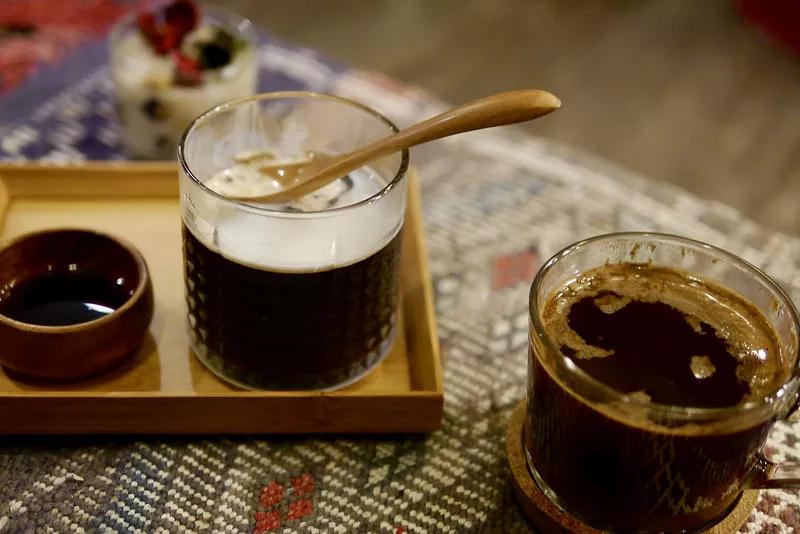
Now brewed hot coffee, put on the table for 2 minutes, let the coffee settle, will not drink coffee grounds, in fact, you can also try coffee containing coffee grounds, especially different. Turkey's current way of cooking carbon and roasting coffee is not filtered in advance, and if you do not pay attention to it, you will also drink coffee powder, which is the original way of drinking coffee in Turkey.
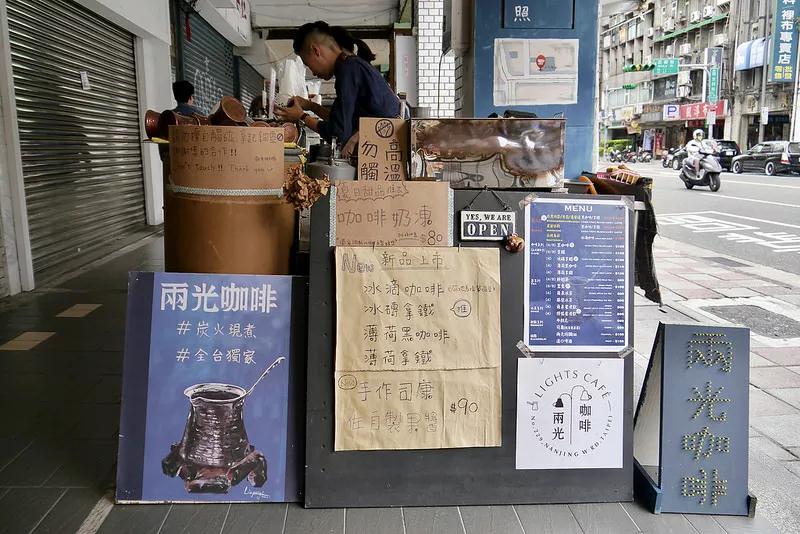
Turks drink coffee, the residue is not filtered out, because the coffee is ground very fine, so when tasting, most of the coffee powder will precipitate at the bottom of the cup, but when drinking, you can still drink some fine coffee powder. This is also the most important feature of Turkish coffee. And divination after drinking coffee is also the biggest attraction of Turkish coffee culture.
There are three flavors of Turkish coffee with sugar, less sugar and no sugar. Turks usually like to drink unsweetened coffee and eat dessert with a cup of bitter coffee with a sweet and greasy taste in the mouth. Be sure to state your taste before making coffee, because you should cook Turkish coffee with sugar and coffee powder together, and you can't drink it with milk or coffee companion.
In fact, this method of cooking generally appears on the local streets of Turkey, and its heat source is not mainly gas, but a large basin of magical heating sand. The sand is heated on a frying pan with a direct fire, and the Turkish kettle is wrapped in the sand. The sand will transfer heat to the Turkish pot, which is better than a uniform heating method.
Like magic, many netizens asked, how did the water come from?
Important Notice :
前街咖啡 FrontStreet Coffee has moved to new addredd:
FrontStreet Coffee Address: 315,Donghua East Road,GuangZhou
Tel:020 38364473
- Prev

Is Blue Mountain Coffee out of date? What is the topic of "outdated" Blue Mountain Coffee?
Professional coffee knowledge exchange more coffee bean information Please follow Coffee Workshop (Wechat official account cafe_style) just like taking a turn with the tide of boutique coffee that has swept the world in the past decade, cutting-edge varieties represented by Panama Rose Summer with its more powerful attitude make Blue Mountain Coffee seem to become yesterday's yellow flower. Now, it seems that the word Blue Mountain now
- Next
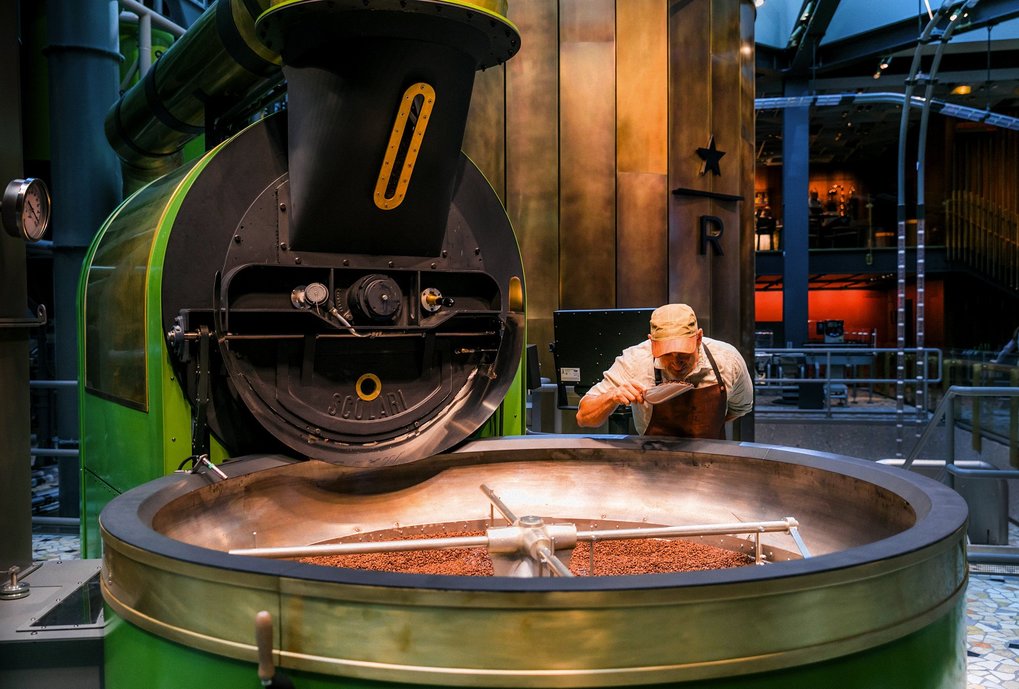
Unveil the largest Starbucks in Europe and the first Starbucks in Italy! Today, Starbucks Bakery Milan
Professional coffee knowledge exchange more coffee bean information Please follow the coffee workshop (Wechat official account cafe_style) in the past few months, all Milanese have noticed: the Palazzo Broggi building is covered with scaffolding and shelters, and Starbucks is decorating here! With 2400 square meters, the new store is photo:nation and, the largest Starbucks store in Europe.
Related
- Caught off guard! Starbucks '15-year-old store quietly closes!
- Naixue Drink drank a stone and claimed a claim was retaliated by the merchant?!
- What is the difference between a cake filter cup and a V60 conical filter cup? What are the advantages and disadvantages of the flat-bottomed filter cup brewing solution?
- What is the difference between fine coffee powder and medium coarse coffee powder? Do I need to sift out the fine coffee powder for making coffee by hand?
- Why does hot American coffee taste bitter? Difference in proportional concentration between hot American and ice American
- Is espresso stored overnight in the refrigerator harmful to your body? Is frozen coffee better than freshly ground coffee?
- What parameters and proportions of water temperature should be used to grind and brew fresh coffee beans? Why can't I drink freshly roasted coffee right away?
- Customers have "changed" Manner's new products! Shop assistant: Please don't mess around!
- Remove sockets in customer areas at Starbucks stores?! Netizen: I won't go if I really tear it down
- What is the difference between the taste steps of sun-dried coffee and washed coffee? Why is sun-cured coffee sweeter and washed coffee sour?

